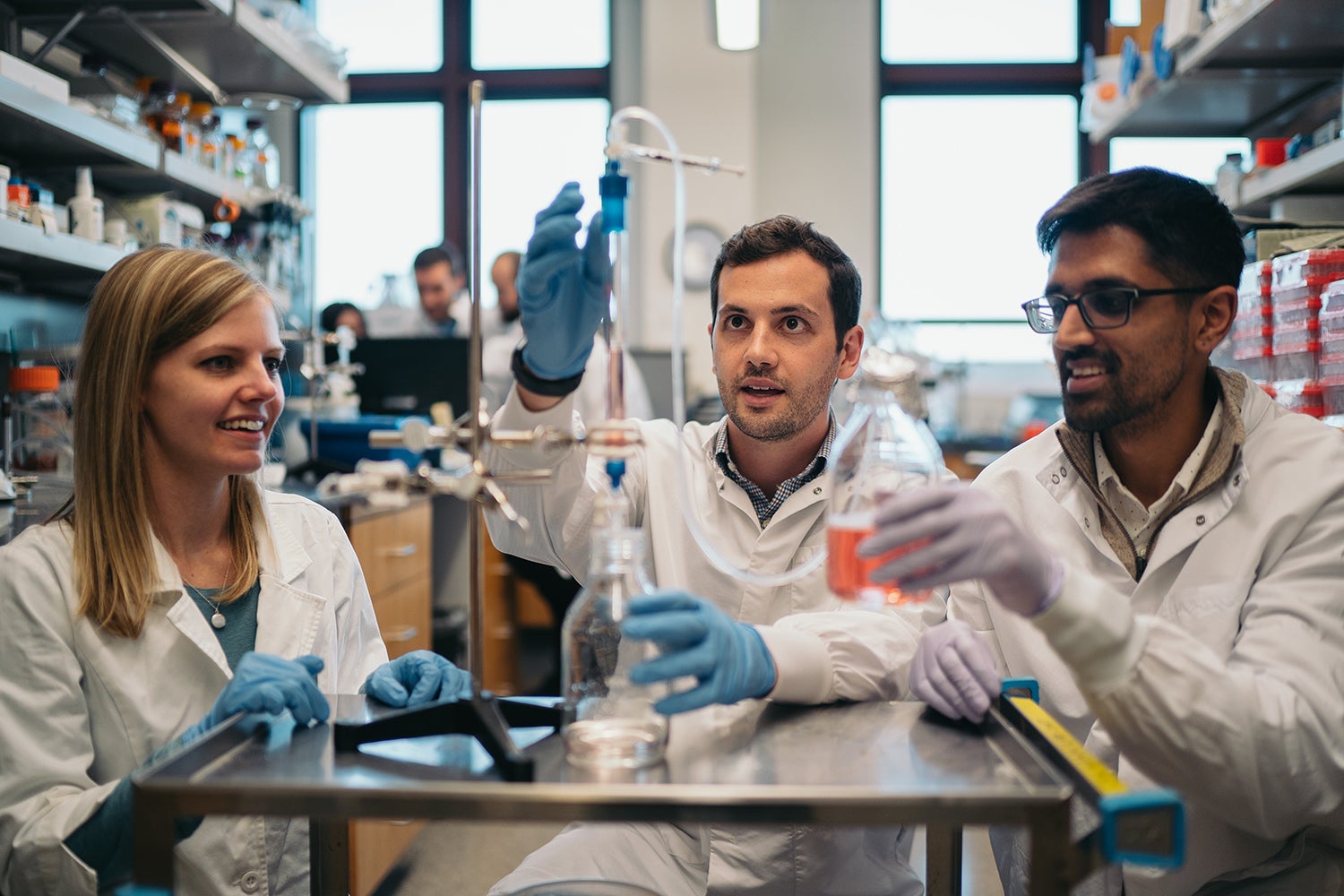

A molecular “snapshot” of a protein can be critical to understanding its function. Scientists at Stanford and NYU have published and investigated a new structure of the protein LAG-3 which could enable the development of new cancer treatments.
Some cancerous tumors hijack proteins that act as “brakes” on our immune system and use them to form a sort of shield against immune recognition. Immunotherapy treatments have been created that turn off these “brakes” and allow our body to attack foreign-looking cancer cells. To further advance such treatments, researchers at Stanford University and New York University have published a new structure of one of these brake proteins, LAG-3. Their work contains key details of the molecule’s structure, as well as information about how the LAG-3 protein functions.
Although over a dozen immunotherapies targeting LAG-3 are in development, and one is already FDA approved, knowledge of LAG-3’s structure and function has been incomplete.
“Given the amount of time and resources being put into developing therapeutics that target LAG-3, it is astounding that we don’t yet have a full understanding of how this protein functions,” said Jennifer Cochran, the Addie and Al Macovski Professor in the School of Engineering and professor of bioengineering, and co-senior author on the study detailing LAG-3, published in Proceedings of the National Academy of Sciences.
Getting a clear image of a protein might not seem like a big deal, but when it comes to proteins, form often begets function. If you know what a protein looks like at the atomic scale, you can begin to understand how it interacts with other molecules and design experiments to further deduce how it works. Studies like these are crucial to developing drugs that can optimally block their target’s function.
A key structure
Proteins like LAG-3, called immune checkpoints, exist to stop our immune system from attacking things they shouldn’t. In theory, our immune system should naturally recognize tumor cells as foreign. But a checkpoint protein shield can give cancer cover.
Current immunotherapies aren’t chemical drugs, they’re lab-manufactured antibodies that attach to certain parts of these checkpoints, and essentially turn them off. Once the checkpoint is turned off, our immune system can recognize and target the cancer again.
There are already approved antibody treatments that target two checkpoint proteins: CTLA-4 and PD-1. Both turn off our immune systems but in different ways. Because CTLA-4 and PD-1 were the first two checkpoint proteins found, they are quite well studied, and different approaches to inhibiting them for cancer therapy earned scientists the 2018 Nobel Prize in physiology or medicine.
LAG-3 seems to work in an entirely different way. Scientists hope that those differences might make it a better or complementary target to treat certain types of cancer, said Jack Silberstein, the Stanford immunology PhD student who co-led the work.
Because of that, Silberstein said, “there was all this excitement in the field. Groups rushed to make antibodies against LAG-3, without knowing entirely how LAG-3 or those antibodies functioned.”
Silberstein and colleagues, including those in Stanford’s ChEM-H Macromolecular Structure Knowledge Center and the SLAC National Accelerator Laboratory, began working on LAG-3’s structure in 2019. A structure of LAG-3 was published by a different group in 2022 providing an initial glimpse of the protein, but it lacked crucial detail around sugar molecules that are key to LAG-3’s function, and detailed information on how the LAG-3 structure related to its biological activity.
A painstaking process
When Silberstein first started this project, “I quickly realized why there was no published structure. It’s a tremendously difficult protein to work with.”
And the technique Silberstein used to get the structure, called X-ray crystallography, is extremely finicky. First, Silberstein had to grow a crystal made entirely out of LAG-3 protein. Then, in collaboration with Irimpan Mathews at the SLAC National Accelerator Laboratory, they fired X-ray beams at the crystal to create a 3D image of the molecule.
LAG-3 is a spindly, flexible protein, so it’s difficult to get the molecules to stack in an orderly way. Silberstein estimates he made more than 10,000 crystals, of which 3,000 were fired with X-rays before the team finally solved the structure.
“It was a very intense, grind-it-out-for-three-years, bang-your-head-against-the-wall kind of thing,” Silberstein said.
But it paid off. The team’s structure confirmed that LAG-3 exists as a dimer, with two LAG-3 molecules coming together to form the functional checkpoint protein. The sugar residue that was elusive in previous structural efforts is a key element in the LAG-3 dimer interface and helps promote a different orientation of the LAG-3 protein.
With the structure described, colleagues at New York University, including MD, PhD student Jasper Du and pathology Assistant Professor Jun Wang co-led critical experiments further elucidating LAG-3’s function. Other NYU colleagues, including Kun-Wei Chan and Xiang-Peng Kong, helped conduct electron microscopy studies to detail disruption of dimer formation by LAG-3 antibodies.
Additional work by the team uncovered, for the first time, that an antibody that has been used for close to 20 years to demonstrate therapeutic efficacy in animal tumor models blocks the activity of LAG-3 by binding to the interface between two LAG-3 molecules, disrupting LAG-3 from forming its functional dimer. Intriguingly, LAG-3 antibodies in clinical development bind to other areas of the protein, away from this dimer interface.
There will never be just one “cure,” because cancers are all different and involve a number of diverse biochemical pathways. Silberstein and Cochran envision a future where a tapestry of surgical, chemical, and immunological treatment approaches are employed, driven by basic science discoveries and medical innovations. Additional treatments targeting LAG-3 may very well be a part of that picture.

